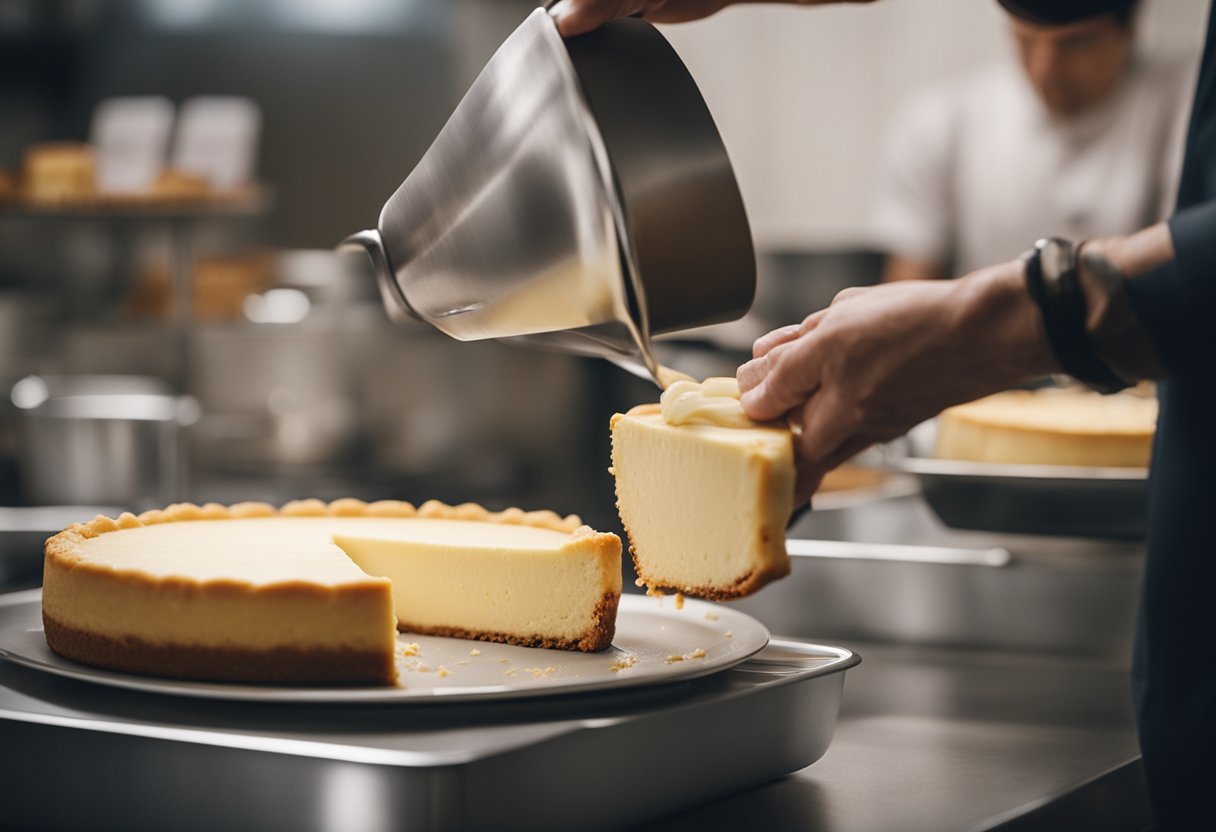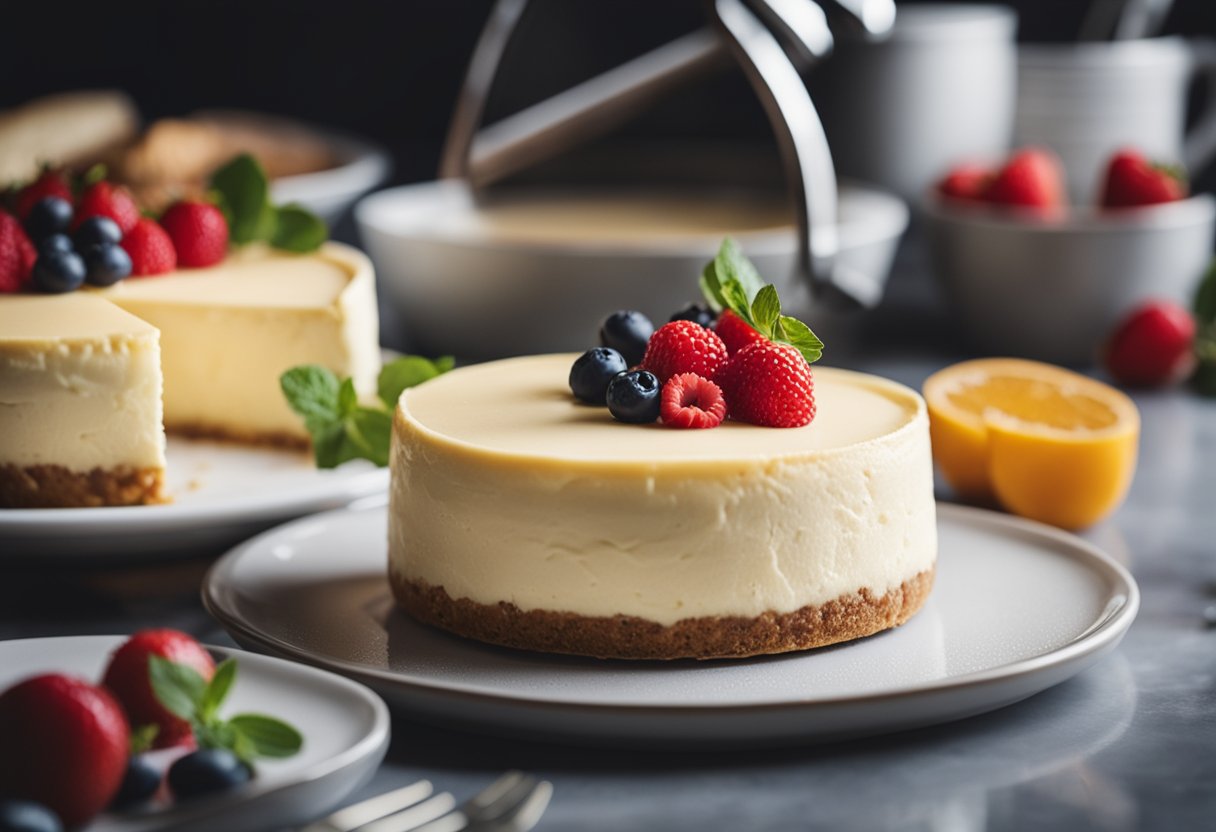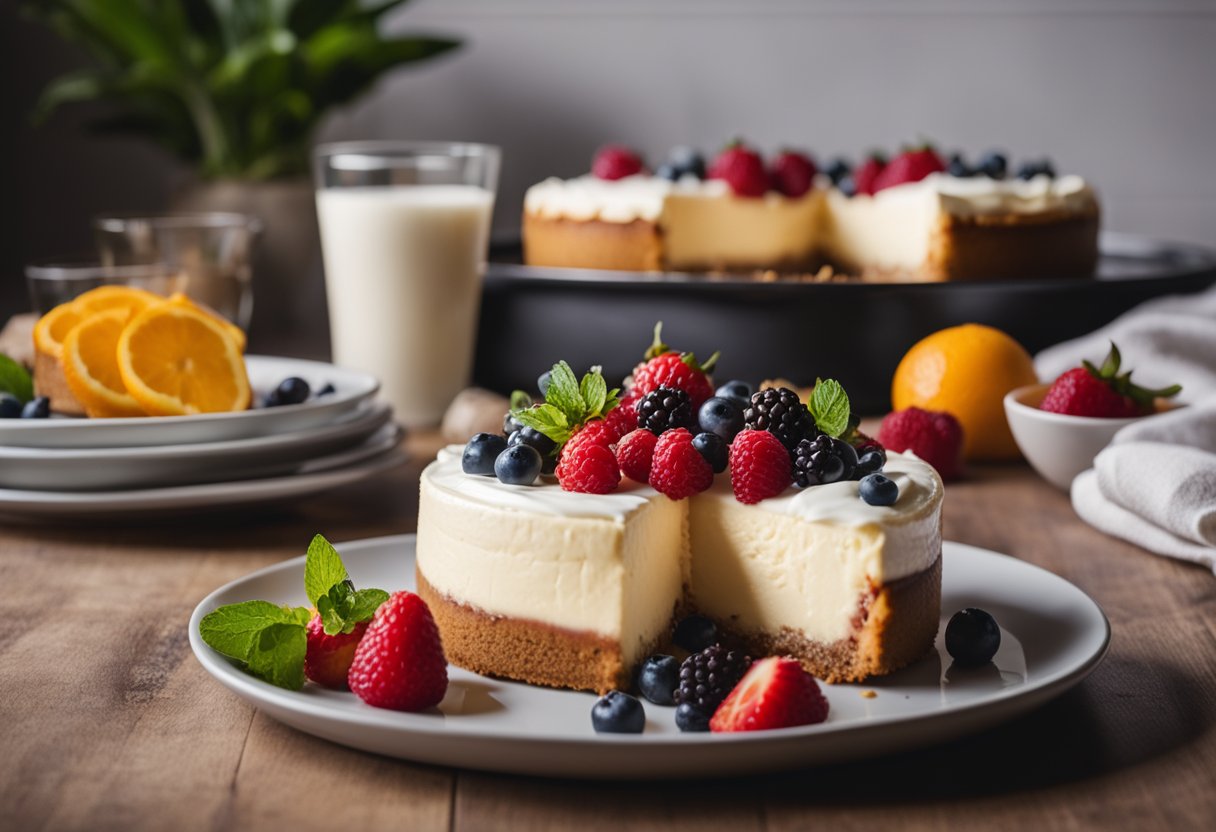Cheesecake is a beloved dessert that typically calls for baking in a springform pan, but don’t worry if you don’t have one. There are several substitutes you can use to still create a delicious cheesecake. Many kitchens are already stocked with suitable alternatives that can yield equally delightful results.

Choosing the right substitute for your cheesecake depends on what you have available and your comfort level in the kitchen. Options range from a basic pie plate to a creative DIY approach with foil and a regular cake pan. You’ll also find that using a different type of pan might even enhance the texture and flavour, giving you a unique take on the classic dessert.
Understanding how to manipulate these alternatives to support the delicate structure of cheesecake is key. For instance, you’ll want to ensure that your substitute is well-greased or lined with parchment paper to allow for easy dessert removal. By paying attention to the details, you’ll be able to whip up a cheesecake that could rival any baked in a springform pan.
Choosing the Right Pan

When attempting to make a cheesecake without a springform pan, the material of the pan you select is paramount, and knowing the substitutes will ensure your dessert’s success.
Evaluate Pan Materials
Your cake pan is not just a container; it’s a tool. Different pan materials conduct heat differently, affecting your cheesecake’s cooking time and texture. Aluminum foil pans are affordable and have the advantage of being disposable. They’re perfect for a softer cheesecake but may not offer the sturdy structure that harder materials provide. Silicone pans are non-stick and flexible, good for releasing your cheesecake without the need for a springform’s latch. However, they lack the rigidity, which can be problematic when moving your cheesecake in and out of the oven. Glass pans are heavier and conduct heat slowly, but once hot, they maintain a consistent temperature. Ceramic dishes can also be used but bear in mind they hold onto heat longer, which may require an adjustment in cooling time to avoid overcooking.
Here’s a quick guide to help you compare:
| Pan Material | Conductivity | Non-stick | Rigidity | Special Consideration |
|---|---|---|---|---|
| Aluminum Foil | Medium | Low | Low | Disposable, economical |
| Silicone | Low | High | Low | Very flexible, non-stick |
| Glass | Low | Medium | High | Maintains temperature |
| Ceramic | Low | Medium | High | Holds heat, decorative |
Substitutes for a Springform Pan
If you don’t have a springform pan, there are a few alternatives you can use. A well-greased round cake pan is the most direct substitute. You’ll need to line the pan with parchment paper to allow your cheesecake to be removed more easily. A tart pan with a removable bottom can serve a similar function to a springform, providing a way to take the sides away after baking.
Another great substitute is a pie pan. Though traditionally used for pies, their slope-sided design can give your cheesecake an interesting shape. For something more unique, a bundt pan can impart attractive ridges on the cake, but you’ll need a steady hand to de-pan your fragile cheesecake without breaking.
Remember, a regular cake pan will work in a pinch; just be sure to grease it and line it well. If you’re working with a pan that doesn’t release the cheesecake easily, consider chilling your cheesecake thoroughly before attempting to remove it, and using a warm knife around the edges to loosen it.
Preparing the Pan and Crust
To make a cheesecake without a springform pan, you’ll need to set up a standard baking pan in a way that allows for easy cheesecake removal. Carefully preparing the pan and crust will ensure that your cheesecake is beautifully presented and tastes delicious.
Lining with Parchment Paper
Start by lining your chosen baking pan with parchment paper. Cut a piece of parchment slightly larger than the bottom of the pan, and press it in. For the sides, cut strips of parchment paper that are tall enough to extend slightly above the rim. This will make it easier to lift out the cheesecake once it’s done.
- Materials needed:
- Baking pan
- Parchment paper
- Scissors
- Measure the bottom of your pan.
- Cut out a circle (or square, depending on the shape of your pan) of parchment paper that fits the bottom.
- Press the parchment into the bottom of the pan.
- Cut strips for the sides and press against the inner walls of the pan.
Creating a Foil Sling
For extra support and easy removal, make a foil sling. Take two large pieces of foil and fold them into sturdy, wide strips. Lay them in a cross shape on the bottom of the pan and allow the excess to hang over the edge. The crust will sit on top of this sling.
- Steps for foil sling:
- Fold two large foil pieces into wide, sturdy strips.
- Place them in a cross on the bottom of the pan, overlapping the strips.
- Ensure excess foil hangs over edges for easy lifting.
Forming the Crust
Combine your crust ingredients—crushed graham crackers, melted butter, and granulated sugar—in a bowl. The texture should be similar to wet sand. Firmly press this mixture into the bottom of the pan over the foil sling, creating a compact and even crust layer.
- Crust ingredients:
- 1 1/2 cups crushed graham crackers
- 1/4 cup granulated sugar
- 6 tablespoons melted butter
Instructions for crust:
- Mix the graham cracker crumbs with granulated sugar in a bowl.
- Pour in the melted butter and stir to combine until the mixture is well-coated and crumbly.
- Transfer the mixture to the prepared pan.
- Press evenly onto the bottom, and slightly up the sides if desired, to form the crust.
Baking the Cheesecake

When baking a cheesecake without a springform pan, pay close attention to the baking time and the use of a water bath to ensure even cooking and prevent cracks.
Adjusting the Baking Time
Aluminum cake pans or other substitutes you might use in place of a springform pan can affect the baking time. Here’s a quick guide to help you adjust:
- Check the cheesecake at the shortest time listed in your recipe.
- Insert a toothpick into the center; if it comes out mostly clean, the cake is done.
- Remember, cooking times may vary if you’re using a pan with a dark or light finish.
Using a Water Bath
A water bath, or “bain-marie,” helps cook your cheesecake gently, which is crucial for texture and preventing cracks. Follow these steps:
- Place your cheesecake in a larger pan.
- Pour hot water into the larger pan until it’s about halfway up the sides of your cheesecake pan.
- Bake as directed, making sure to refill with hot water if it evaporates too quickly.
Final Touches and Presentation

Once your cheesecake has baked to perfection, the right cooling and presentation methods ensure a beautiful dessert that’s sure to impress.
Cooling and Releasing the Cheesecake
- After baking, let your cheesecake cool for at least an hour to allow it to set.
- Carefully run a knife around the edge of the pan to loosen the crust.
- Invert onto a plate, then invert again onto a serving dish to maintain the crust on the bottom.
Serving Suggestions
- Slice it with Dental Floss: For clean slices, use unscented dental floss. Slide underneath and cross the ends over to cut through.
- Presentation: Place each slice on a plate. Drizzle with caramel sauce or a dollop of sour cream for added elegance.
- Whipped Cream: Beat heavy whipping cream with a hint of vanilla extract for a homemade touch.
- Garnish: Add a slice of lemon or a few lemon zest curls to each plate for a pop of color and a hint of citrus.
Frequently Asked Questions
Making a cheesecake without a springform pan can seem challenging, but there are several alternatives you can use effectively. Understanding how to use these substitutes and techniques will help you bake a delicious cheesecake with ease.
What are some alternatives to a springform pan when making cheesecake?
You can use a deep-dish pie pan, a regular cake pan, or silicone bakeware as alternatives. Lining the bottom with parchment paper and greasing the sides can also make the release easier.
Can I use a pie pan for baking a cheesecake and how?
Yes, a pie pan can be used for baking a cheesecake. To do so, ensure you grease the pan well and consider using a crust that extends up the sides to help lift the cheesecake out after baking.
What’s the best way to remove a cheesecake from a regular pan?
Allow the cheesecake to cool completely before trying to remove it. Then, carefully run a knife around the edge and use a warm towel or a warm water bath to loosen the bottom.
How do I bake a cheesecake in a cake pan without it sticking?
Grease the cake pan, then line it with parchment paper both at the bottom and around the sides. These steps will help prevent sticking and aid in the removal of the cheesecake.
Are there any tricks to getting cheesecake out of a non-springform pan?
After the cheesecake has cooled, freeze it for a few hours. This hardens the cheesecake, making it easier to release from the pan without losing its shape.
How can I create a makeshift springform pan for baking cheesecake?
Wrap the outside of a cake pan with heavy-duty foil to prevent leaks. Inside, place a well-greased piece of parchment paper. Once baked and cooled, you can lift out the cheesecake by the paper.
